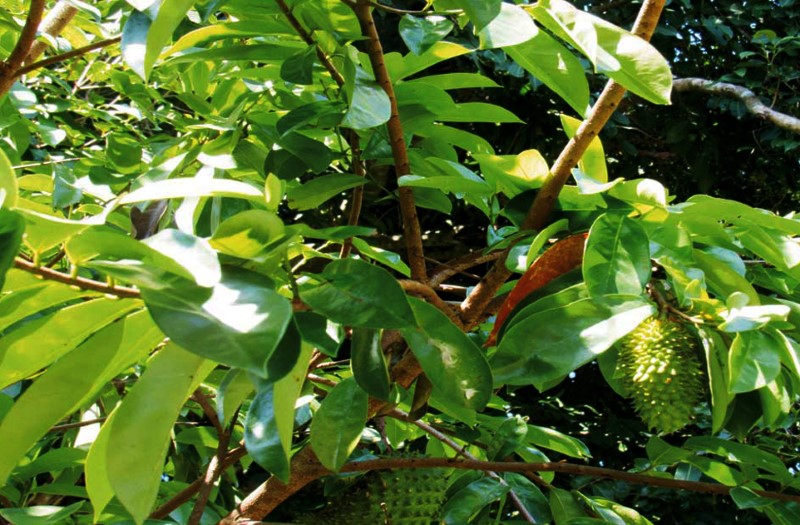Flowering and fruiting period: April - October
Distribution: Native of CentralAmerica and West Indies, introduced elsewhere
Habitat: Cultivated
Uses: Fruits edible, anti-cancerous. Extraction from leaves is lethal to head lice
and bedbugs. When grinded, the seeds are effective pesticides against head lice. The juice of the fruit is said to be able to increase the amount of urine, and treat
urethritis and haematuria. Immature fruits are grinded and decocted as a treat
for dysentery.
Key Characters: Trees, upto 10 m high, bark pale brown; young twigs
glabrescent. Leaves simple, alternate; lamina elliptic, oblong, margin entire. Flowers yellowish-green. Sepals 3, triangular, persistent. Petals 6 (3+3) ovateacute,
yellow; stamens many, filaments broad at base, with capitate top of the connective; ovary superior. Fruit ovoid to obovoid, green, covered with curved
spines; seeds many, reddish-brown. |
